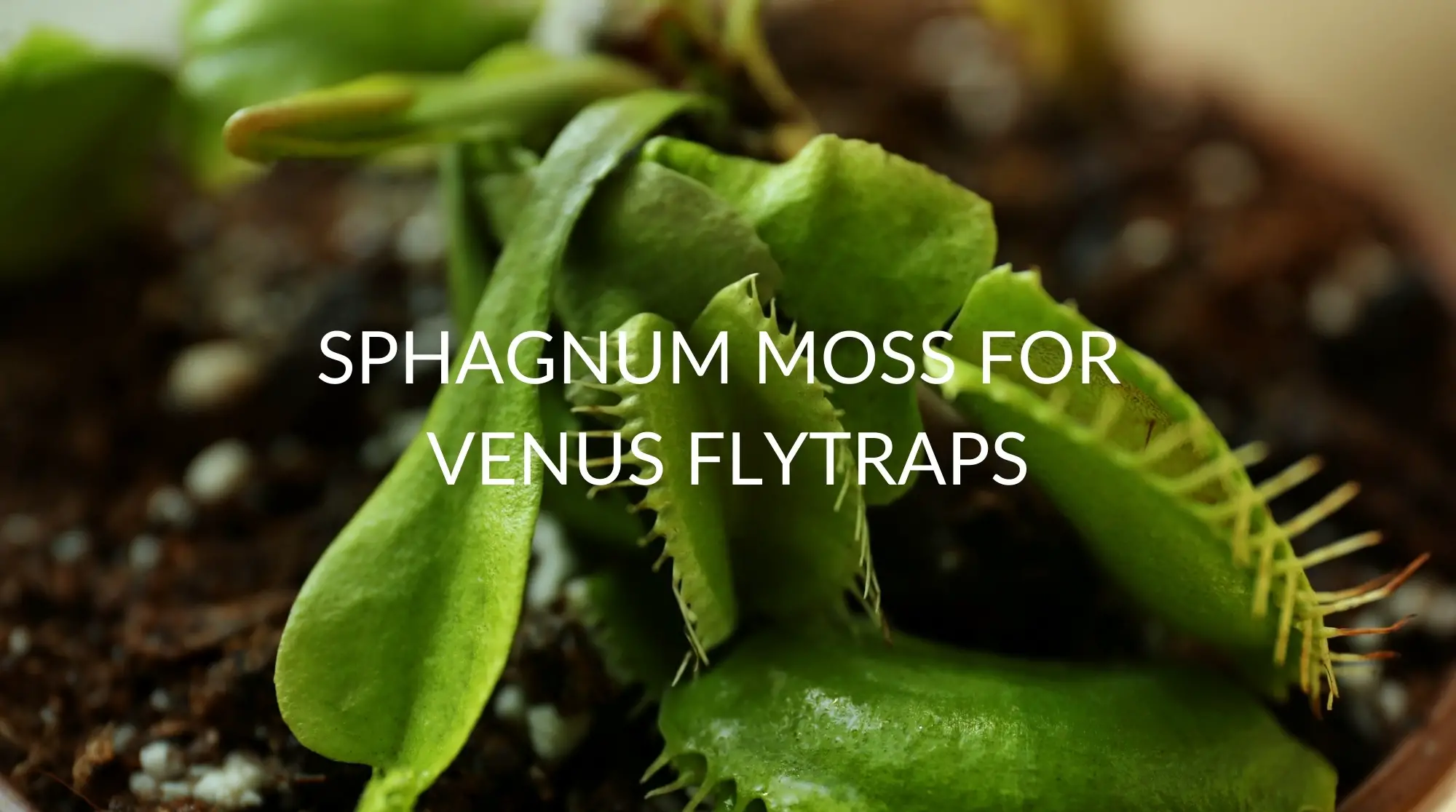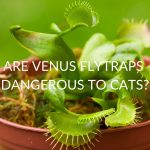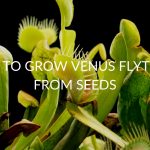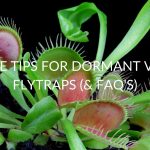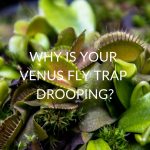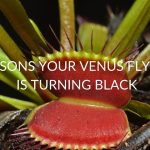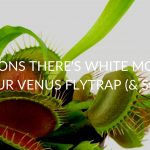The optimum planting mediums for your Venus flytrap are sphagnum and peat moss. However, keep in mind that if you use Sphagnum moss, your plant may rot if there isn’t a draining agent present. Venus flytraps prefer moist soil that drains well. However, the plant is prone to root rot if the soil is compacted and does not drain properly.
Continue reading to learn more about using Sphagnum moss for a Venus flytrap, the benefits of using Sphagnum moss, how to repot a Venus flytrap plant with Sphagnum moss, and more.
Can You Use Sphagnum Moss for Venus Flytraps?
When planted, Venus flytraps require nutrient- and mineral-free soil with enough drainage. When it comes to potting materials for carnivorous plants, sphagnum moss or peat moss combined with perlite are ideal choices.
The moss helps to keep moisture in the soil, while the perlite helps to drain and aerate it. By using a Sphagnum moss medium for your Venus flytrap, you are providing the best possible living habitat for your plant. Most species of carnivorous plants may be planted in moistened Sphagnum Peat Moss and Perlite. Simply wet the moss and lightly cover the roots before potting your plants.
Why Should You Use Sphagnum Moss for Venus Flytraps?
Draining Properties
When growing Venus flytraps, succulents, or orchids inside, sphagnum moss is usually employed. This medium is generally preferred due to its light properties and absorbs a lot of moisture. However, Sphagnum moss does not become excessively wet, which means your Venus flytrap is less likely to suffer from root rot.
Depending on the plant, Sphagnum moss can be used alone or blended with soil or another potting medium. Since sphagnum moss does not contain a lot of nutrients, it may require more regular watering and fertilizers on its own.
Sphagnum or peat moss mixed with perlite makes excellent carnivorous plant potting materials. The moss helps to keep moisture in the soil, while the silica sand and perlite help to drain and aerate it.
Great Soil for Carnivorous Plants
Sphagnum moss is a good soil additive for acid-loving plants or strongly alkaline environments since it has a naturally low pH of approximately 4.0. This neutral pH provides your Venus flytrap with the correct acidity it needs to thrive. On the other hand, peat moss, which is similar to Sphagnum moss, is also affordable, lightweight, and easy to deal with.
As a Growth Substance, Sphagnum Moss is Pliable
After harvest, Sphagnum moss is typically dried and sterilized. It has a delicate, dry texture and is light brown in color. It’s a common soil supplement because it helps sandy soil retain moisture while also assisting clay soil in loosening up and draining easier.
Since it is both malleable and fragile, Sphagnum moss is extensively utilized to provide a soil substrate for carnivorous plants.
Sphagnum Moss Quality and Sustainability
Sphagnum moss is regarded to be more ecologically friendly and sustainable than peat moss. Peat moss can take generations to mature and harvest, but sphagnum moss can be harvested in less than a decade. When looking for sphagnum moss, it’s still a good idea to go with a reliable and long-term source.
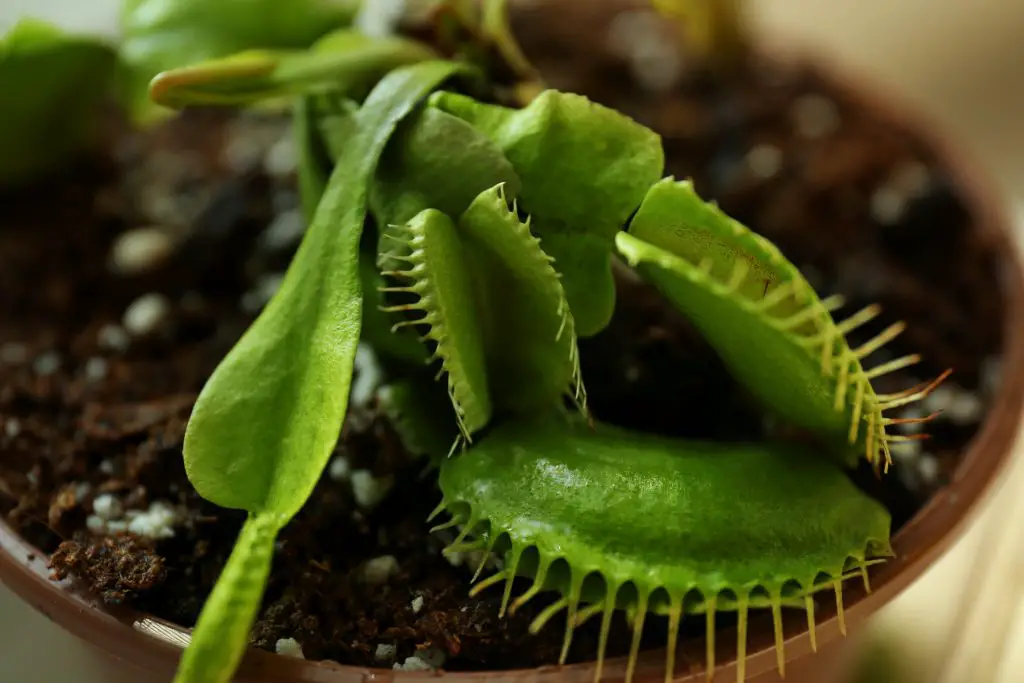
What Kind of Sphagnum Moss Do Venus Flytraps Need?
Venus flytraps require either peat moss or long-fiber sphagnum moss. Peat moss is sold in huge bales by most potting soil dealers. When it comes to potting Venus flytraps, the most frequently approved media is a 1:1 combination of peat and perlite in terms of volume. Any form of sphagnum moss will do as long as it isn’t enhanced when picking a brand.
Venus flytraps cannot absorb soil minerals or nutrients. As a result, you must employ components that are mineral- and nutrient-free. Also, because the Venus flytrap prefers a humid environment, a potting medium with enough drainage and aeration is advised.
Carnivorous plant soil can be purchased or created at home. In most circumstances, just one species of moss and a draining agent are necessary. Peat moss, for example, can be combined with perlite or long-fibered sphagnum moss and silica sand.
How Do You Repot a Venus Flytrap with Sphagnum Moss?
Choosing the Best Sphagnum Moss Medium
The choice of potting soil is one of the most crucial factors of successfully replanting a Venus Flytrap. Venus flytraps are found in the South and North Carolina wetlands. Acidic soil and a nutrient-free growth medium are ideal for these carnivorous plants. The Venus flytraps will rapidly burn and die if you use a well-nourished and nutrient-rich potting media.
For repotting Venus Flytrap, use the soil mixture for typical carnivorous plants. If you’re producing your own soil, a perlite to Sphagnum moss ratio of one to one is perfect. Sphagnum moss maintains the acidity necessary by the Venus flytrap. Perlite helps the potting medium retain moisture.
Selecting a Potting Container
There are a few things to consider when selecting a container for your Venus Flytrap. Although your Venus Flytrap does not grow rapidly in size, its roots can get rather deep when mature. As a result, a container that allows for the roots to grow deeper into the Sphagnum moss mixture is ideal.
Plastic or glazed ceramic pots are the ideal materials for Venus flytraps. These materials provide environmental insulation, allowing you to avoid exposing your plant to severe heat or cold. They also do not leach any nutrients into the soil.
Venus flytrap plants should be repotted in pots with a minimum depth of four inches. Such pots will aid in the growth of the roots while keeping the majority of the water away from the plant’s rhizomes.
Filling the Container with Your Sphagnum Moss Mix
Fill the container with a 1: 1 mixture of perlite and peat moss with care. To moisten the potting material before transplanting your plant, lightly sprinkle it with clean water or rainfall. Make a tiny hole in the center of the fresh pot mix for the Venus Flytrap to be repotted.
Transplanting Your Venus Flytrap
Shake the Venus flytrap gently out of the old container. Carefully handle the root balls. Separate the old dirt from the roots of the Venus flytrap with your fingertips. Separate many plants if required so that they may be planted individually in various containers.
Place the plants in a new, damp potting mix, gently pressing the dirt around the roots and thoroughly watering the plant. The water should run through the drainage holes and out of the bowl.
After Care of Your Venus Flytrap
The Venus flytrap should be entirely stable after completing the repotting method described above, and it should not require any extra care.
One to two weeks after transplantation, growth should come to a standstill. A few Venus Flytraps may lose some traps after repotting. This lovely carnivorous plant will not annoy you as long as its roots and rhizomes are healthy.
FAQ
What Is the Difference Between Sphagnum Moss and Peat Moss?
While peat moss is similar and frequently mislabeled as sphagnum peat moss, it is still quite different. Peat moss starts as sphagnum moss, but as time goes on, the moss dies and is replaced by new sphagnum moss. This process is repeated many times, and after hundreds or even thousands of years, the dead sphagnum moss layers create a bog.
Peat moss is the name given to a layer of dead, compacted moss. The main difference between sphagnum and peat moss is that water has saturated peat moss. Water is required for the formation of a bog. Peat moss is a combination of numerous plant kinds that perished along with the moss, and it may contain twigs and dead insects.
Peat moss is offered in compressed bales and is used in potting and garden soils the same way as milled sphagnum moss. Peat moss is a less expensive potting and garden soil supplement that is ideal for growing acid-loving plants.
Which is Better for a Venus Flytrap: Sphagnum or Peat Moss?
Sphagnum is usually looser, but it may be compacted if necessary. It is better suited to plants that like less damp soil or require more air around their roots, like Venus flytraps. On the other hand, sundews, Sarracenia, flytraps, and terrestrial Utricularia thrive on peat.
What Soil Is Best for A Venus Flytrap?
To grow, the flytrap requires nutrient-free soil with enough drainage and aeration. A popular soil mixture is one part sphagnum or peat moss to one part perlite. Plants should never be grown in potting soil, compost, or fertilizer. If you utilize these materials, your plant will die.
How Long Can Sphagnum Moss be Kept Alive?
Sphagnum moss can live anywhere from 2 to 5 years in typical settings. The sphagnum, however, is not living at this time, contrary to common perception. In reality, the moss was most likely dead when you bought it. Sphagnum moss can only survive for a short time without water before it dies.
Is it Possible to Grow Venus Flytraps in Succulent Soil?
Succulent soil is inappropriate for Venus flytraps due to its high nutrient concentration. Succulent soil nutrients can produce mineral burns, causing Venus flytraps to become weak and finally die. Use nutrient-free soil instead of succulent soil while growing Venus flytraps.
Is Sphagnum Peat Moss from Miracle-Gro Safe for Venus Flytraps?
Unfortunately, most Miracle-Gro products contain some form of fertilizer, which is beneficial to most plants and trees. However, Venus Flytraps don’t like it, and it can actually kill your plant. In order to produce a happy, healthy Venus flytrap, one will need to provide their plant with nothing but a sphagnum peat moss and purified water to water the little plants.
Recap
The best soil medium to use for your Venus flytrap is pure sphagnum or peat moss. However, this moss is not enough to allow your plant to drain in the way it needs. As a result, if you don’t employ a draining agent with Sphagnum moss, your plant may succumb to rot.
Venus flytraps require nutrient-free, mineral-free soil with sufficient drainage when planted. Venus flytraps prefer Sphagnum-based soil mixes. Perhaps the most straightforward medium to utilize is pure, unenriched peat moss or long-fiber sphagnum moss. Sphagnum moss or peat moss mixed with silica sand or perlite make excellent carnivorous plant potting materials.
The soil of the Venus flytrap must be maintained moist at all times. If the soil is compacted and does not drain properly, the plant is also prone to root rot. Since sphagnum moss is recognized for its quality, sustainability, drainage, and unique soil features, Venus flytrap owners worldwide choose it as their preferred soil media for carnivorous plants.

